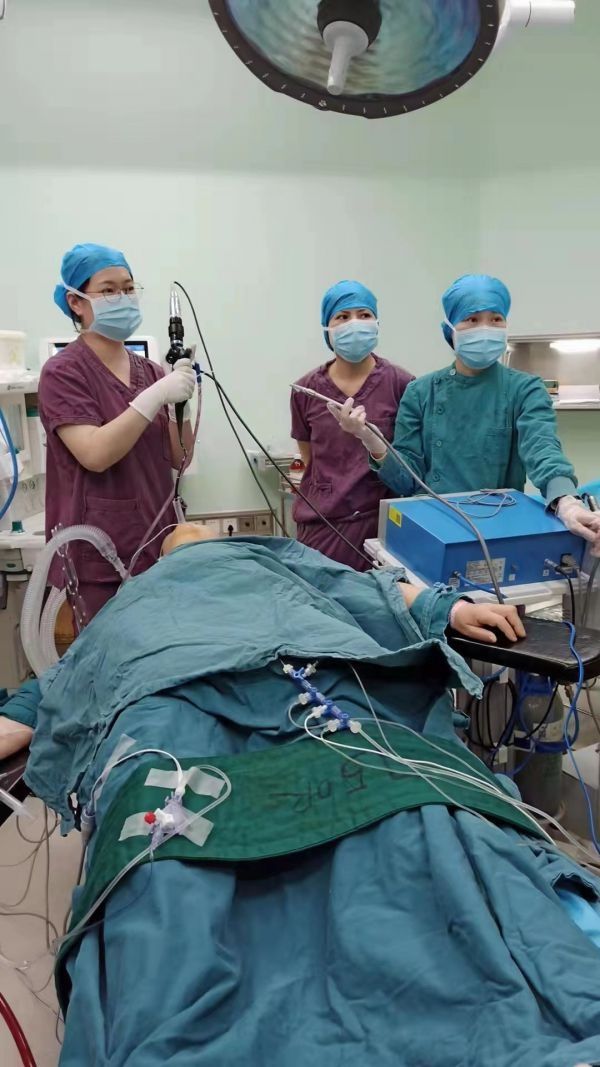Changjiang Daily Wuhan Client, April 16th 90% of the bronchial tubes were blocked by the tumor and urgently needed surgical resection. However, surgical instruments and anesthesia instruments are “traffic” in the narrow trachea and cannot be operated at the same time. In emergencies, ECMO applies for “combat” and bypasses the body to help patients maintain lung function, ensuring the smooth progress of treatment. At present, the patient Ms. Liu has been successfully offline and transferred to the general ward.
65-year-old Ms. Liu was diagnosed with a malignant tumor of her right lung ten years ago, and her condition was well controlled after surgery. A month ago, Ms. Liu suddenly started coughing, wheezing, and hemoptysis again. In the Department of Respiratory Medicine, Wuhan Fourth Hospital, she found that new organisms had grown at the lower end of the bronchial tube, and 90% of the lumen had been blocked, which needed to be removed under endoscopy as soon as possible. .
Department of Respiratory Medicine, Lu Qiaofa, introduced that endoscopic tumor resection is less traumatic, but the patient needs general anesthesia, intubation through the trachea, and a ventilator to help the patient breathe. However, Ms. Liu’s trachea was severely blocked, like a single lane, unable to accommodate both the endotracheal tube and the bronchoscope.
There is no condition for general anesthesia, and the operation is imminent. The hospital’s respiratory medicine department, anesthesiology department, intensive care department, and radiology department conducted a joint consultation. During the discussion, a consensus was reached: Since there is a “traffic jam”, then we will “detour”.

The medical staff removed the airway tumor for the patient with the assistance of ECMO. Photo by Correspondent Chen Mengyuan and Huangqin
“The tracheal intubation is to maintain the patient’s breathing. ECMO equipment can play an artificial lung function, and the patient can complete the gas exchange task without breathing.” The hospital Director Xu Tao of the Department of Critical Care Medicine introduced that ECMO is a “heavy weapon” to save the lives of dying patients, and it is essentially an improved artificial heart-lung machine. When ECMO is running, blood is drawn from the vein, absorbs oxygen through the membrane lung, excretes carbon dioxide, and returns to the body after gas exchange is completed. According to this scheme, the patient does not need to be intubated during the operation, and all access can be reserved for the bronchoscope.
At about 7 am on April 15, Ms. Liu, who was scheduled to perform the operation in the morning, suddenly had difficulty breathing and fell into a coma. In an emergency, Director Xu Tao led the team to quickly connect the patient to ECMO to maintain blood oxygen saturation. The radiologist has embolized the tumor blood vessels in advance through intervention, and the surgical conditions are ready. At 10 am, Ms. Liu was pushed into the operating room. After nearly 4 hours of meticulous surgery, the respiratory physician completely removed the tumor for the patient, with only a small amount of bleeding during the operation. At present, Ms. Liu has been successfully released from ECMO and ventilator, and her vital signs are stable. (Changjiang Daily reporter Wu Ye, correspondent Chen Mengyuan and Huang Qin)
[Editor: Yu Lina]